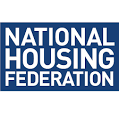A recent report completed by the National Housing Federation (NHF) and the Housing Diversity Network (HDN) examined equality, diversity and inclusion (EDI) in the housing association workforce compared with the communities we serve.
Diversity can broadly be understood as recognising, understanding and accepting individuals from varying backgrounds or with varying characteristics. In practice, for an organisation this may mean enabling access to a service, employment or leadership role for all people despite of age, gender, race, socioeconomic background, disability, sexuality, spiritual practice and so on. This may be done by questioning bias, preventing barriers and making reasonable adjustments to meet individual needs.
Diversity in the workplace allows an organisation to become more creative, open to change and better positioned to deliver quality services to all customers. Increasing and improving workplace diversity has become an important issue in the recent years due to the recognition of how the workplace is changing and, in some instances, how the workforce is not.
Social housing is rooted in addressing inequalities and, as a sector, provides millions of homes for people across the country. We are a sector that serves so many diverse communities, diverse communities being those where the individuals themselves have different characteristics and backgrounds whether that be in relation to gender, sexuality, religion, disability, caring responsibilities, socioeconomic background or other backgrounds and characteristics. For the social housing sector to best-provide affordable homes to those in housing need, our workforces need to reflect the communities themselves.
In 2021, 174 social housing providers across the country submitted their EDI data to the NHF. The report on this research showed that there are data gaps for many of the characteristics. Nationally, there is little data on socioeconomic background, caring responsibilities or gender identity. Additionally, there are comparatively large cohorts of staff preferring not to disclose their religion or sexuality. The NHF and the HDN are committed to exploring the reasons behind these data gaps and are asking providers to engage with staff and external agencies on how inclusive social housing providers really are.
Here at WHA, we are happy to report that we were able to submit a full set of data in all areas for our workforce. Here are some of the findings, displaying the WHA workforce against the National workforce and the WHA customer base against the National customer base, allowing comparisons to be made across the data:
|
Gender |
WHA |
National |
|
WHA has a higher female workforce than National |
67.44% |
56.48% |
|
WHA has a higher female customer base than National |
58.12% |
50.80% |
|
Religion/Faith |
||
|
WHA has a higher Christian faith workforce than National |
58.14% |
30.11% |
|
WHA has a higher No Religious faith workforce than National |
34.88% |
24.49% |
|
There is not enough WHA customer data to compare Religion/Faith. National is Christian faith 57.58%, and No Religious faith at 24.01% for customers. |
||
|
Age |
WHA |
National |
|
WHA has a higher than National workforce age range above 45yrs |
79.07% |
51.36% |
|
WHA has a higher than National customer age range above 45yrs |
72.03% |
51.45% |
|
Marital or civil partnership status |
WHA |
National |
|
WHA has a higher than National married workforce |
39.53% |
21.13% |
|
WHA has a lower than National married customer base |
30.27% |
45.56% |
|
WHA has a higher than National same sex couple workforce |
4.56% |
0.02% |
|
WHA has a lower than National same sex couple customer base |
0.08% |
0.55% |
|
WHA has a higher than National divorced workforce |
9.30% |
2.40% |
|
WHA has a higher than National divorced customer base |
8.81% |
5.63% |
|
Provision of informal care |
WHA |
National |
|
There is not enough WHA customer or National data to compare Caring Responsibilities. |
||
|
Ethnicity |
WHA |
National |
|
WHA has a higher than National white workforce |
90.70% |
71.12% |
|
WHA has a higher than National white customer base |
93.95% |
83.24% |
|
Disability |
WHA |
National |
|
WHA has a higher than National workforce with a disability |
18.60% |
5.15% |
|
WHA has a lower than National customer base with a disability |
13.95% |
22.29% |
|
Sexual orientation |
WHA |
National |
|
WHA has a higher than National heterosexual workforce |
90.70% |
56.65% |
|
WHA has a lower than National heterosexual customer base |
93.26% |
94.57% |
|
Socio-economic |
WHA |
National |
|
There is not enough WHA customer or National data to compare Socio-economic information. |
||
The above information shows that whilst WHA does not equal National averages across several characteristics, our customer results compare relatively well, indicating that our workforce is a good representation of the communities we serve.
We understand that with the introduction of new key measures, such as caring responsibilities and socioeconomic background, we have some work to do to collect further data about our customers. We will be asking our customers for help collecting this information as we move forward together.
In the name of ED&I and our organisational aim to help make Warrington a great place to live where the potential of individuals and communities can be realised, WHA are members of the HDN and early adopters of the HDN’s Equality, Diversity & Inclusion Policy. WHA is committed to our legal responsibilities as a service provider and employer under the Equality Act 2010 and The Public Sector Equality Duty. We are proud to understand that we also have a moral responsibility to advance ED&I beyond our legal requirements, to challenge discrimination based on a range of social and culture factors including appearances, political affiliation and socio-economic background. This policy, along with our Equality Impact Assessment can be found below:
Click HERE if you would like to know more about the work of the Housing Diversity Network (HDN)
Click HERE if you would like to know more about the work of the National Housing Federation (NHF) and view the full report EDI-national-data-report








